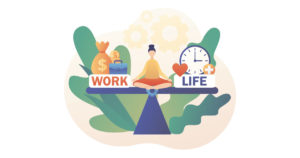When creating a website, it’s important to consider accessibility for all users. This includes those with disabilities who may use assistive technologies to access web content. By making your site accessible, you’re providing an inclusive experience for everyone. Here are some key considerations for making your website more accessible.
Designing for accessibility means creating a website that can be used by everyone, regardless of their physical or cognitive abilities.
Designing for accessibility is a noble, yet often overlooked, task in web development. It is important to remember that not everyone who visits your website has the same abilities. For example, someone may be colorblind or unable to accurately use a computer mouse; or they may have slower reaction times due to age or a physical disability. That is why it is so vital to design with universal access standards in mind. This means making sure websites are navigatable through keyboard arrows and easy-to-read font sizes; ensuring user activity is understood loud and clear in audio and visual communication; and more creative solutions that involve a whole host of technology methods specific to each situation. In short, designing for accessibility tends to mean rediscovering—or reinventing—the way we see web usability through an inclusive lens.
There are many factors to consider when making a website accessible, including color contrast, text size and spacing, and navigation.
Making a website accessible is fundamental for successful web design. Taking into account the many factors that contribute to this endeavor, such as color contrast and text size, can help create an online experience that meets the needs of all types of users. The colors chosen should provide enough contrast with background colors, while text size and spacing should be set and adjusted in a way that allows content to be easily read. Additionally, navigation must also be simple and logical so that users can easily find where they want to go and what they want to do on the website. Despite the complexity of accessible web design, it is within reach with proper planning.
Making your website accessible can help you reach a wider audience and improve your search engine ranking.
Having an accessible website can mean the difference between making money and missing out on potential customers. Website accessibility means that everyone can easily use your website regardless of disability or technological limitations, allowing you to reach a wider audience and make more sales. Additionally, ensuring that your website meets accessibility standards helps improve your search engine ranking as search engines reward websites that are compatible with diverse user experiences. Taking the time to make sure your website is accessible not only increases profits but also contributes to creating an inclusive and welcoming online environment for all web users.
There are some easy ways to make your website more accessible, such as using alt text for images and adding captions to videos.
Accessibility is more important than ever for websites. Making your website easily accessible for all visitors ensures that everyone can navigate the site and access its contents. Fortunately, there are some simple steps you can take to make your website more accessible. For starters, using alternative text with images allows the visually impaired to get a description of the image without seeing it directly. Additionally, adding captions to videos allows those who are hard of hearing or deaf to also understand the video’s contents. Following these simple methods makes sure no one is left out when visiting your website.
Keep in mind that accessibility is an ongoing process - there's always room for improvement!
Accessibility is not a one-time process but an ongoing journey. It requires continual effort and commitment to ensure that everyone, regardless of their disability, can take full advantage of the services being offered. When it comes to accessibility, it’s important to remember that there is always room for improvement. By constantly reviewing website designs, content, and other factors related to accessibility, any organization can work towards providing an inclusive experience for all. Although it won’t happen overnight, taking these smaller steps towards improving accessibility will add up!
In Conclusion
Designing for accessibility is a key factor in website design. Accessibility can help you reach a larger audience, improve search engine rankings and make sure everyone can access your website. Though it may seem like an overwhelming task, there are many steps you can take to make your website more accessible such as using alt text for images, adding captions to videos and considering color contrast, text size and spacing. Remember that making your website accessible is a continuous process which you should strive to continually improve – don’t forget to revisit accessibility regularly!















